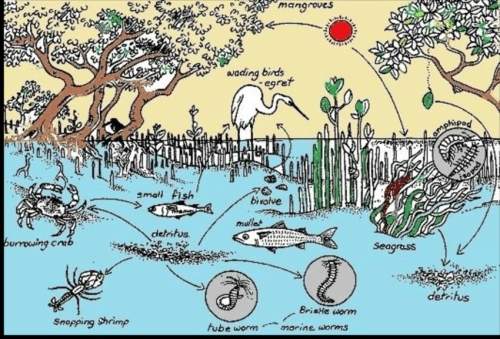
Biology, 15.02.2021 20:00 thomasmurphy200
Diabetes mellitus is characterized by too much glucose buildup in the blood. In diabetes, this is because the target cells of the body become resistant to the effects of insulin ; in later stages of this type of diabetes, the pancreas begins to fail as well. In type 2 diabetes, this is because there are a decreased number of cells available to secrete insulin; this results in an insufficient amount of insulin to meet the demands of the body.

Answers: 2
Another question on Biology

Biology, 21.06.2019 14:00
According to the law of conservation of energy, energy can neither be created nor destroyed. if this is true, why is there less energy in the top of the energy pyramid than there is in the bottom of the energy pyramid?
Answers: 1

Biology, 21.06.2019 18:30
Which table best shows the impacts resulting from human activity? impact of human activities human activity impact forest area cleared to construct an airport increase in oxygen level vegetation cleared to construct an oil mine increase in pollution impact of human activities human activity impact forest area cleared to construct an airport increase in sound pollution vegetation cleared to construct a power plant contamination of water impact of human activities human activity impact beehives cleared from urban areas increase in vegetation dams constructed on a river increase in fish population impact of human activities human activity impact beehives cleared from urban areas increase in bird population dams constructed on a river better quality of water
Answers: 3

Biology, 21.06.2019 23:00
Biomass can be used to generate electricity. biomass relies heavily on agricultural crops. plants release carbon dioxide and water in combustion. plants use photosynthesis to originally generate the energy that is needed. the chemical energy of these plants all started with what energy source?
Answers: 3

Biology, 22.06.2019 02:00
How is ribosomal rna useful as a molecular clock? a. a large portion of the dna ring is not vital to structure or function, allowing it to accumulate neutral mutations. b. its rate of mutation increases over time as organisms continue to evolve and differentiate from each other. c. a slow mutation rate makes it useful for determining evolutionary relationships between ancient species. d. it is only found in select organisms, making it easier to compare relationships between species that have it.
Answers: 1
You know the right answer?
Diabetes mellitus is characterized by too much glucose buildup in the blood. In diabetes, this is be...
Questions










Computers and Technology, 20.11.2019 23:31

Computers and Technology, 20.11.2019 23:31













